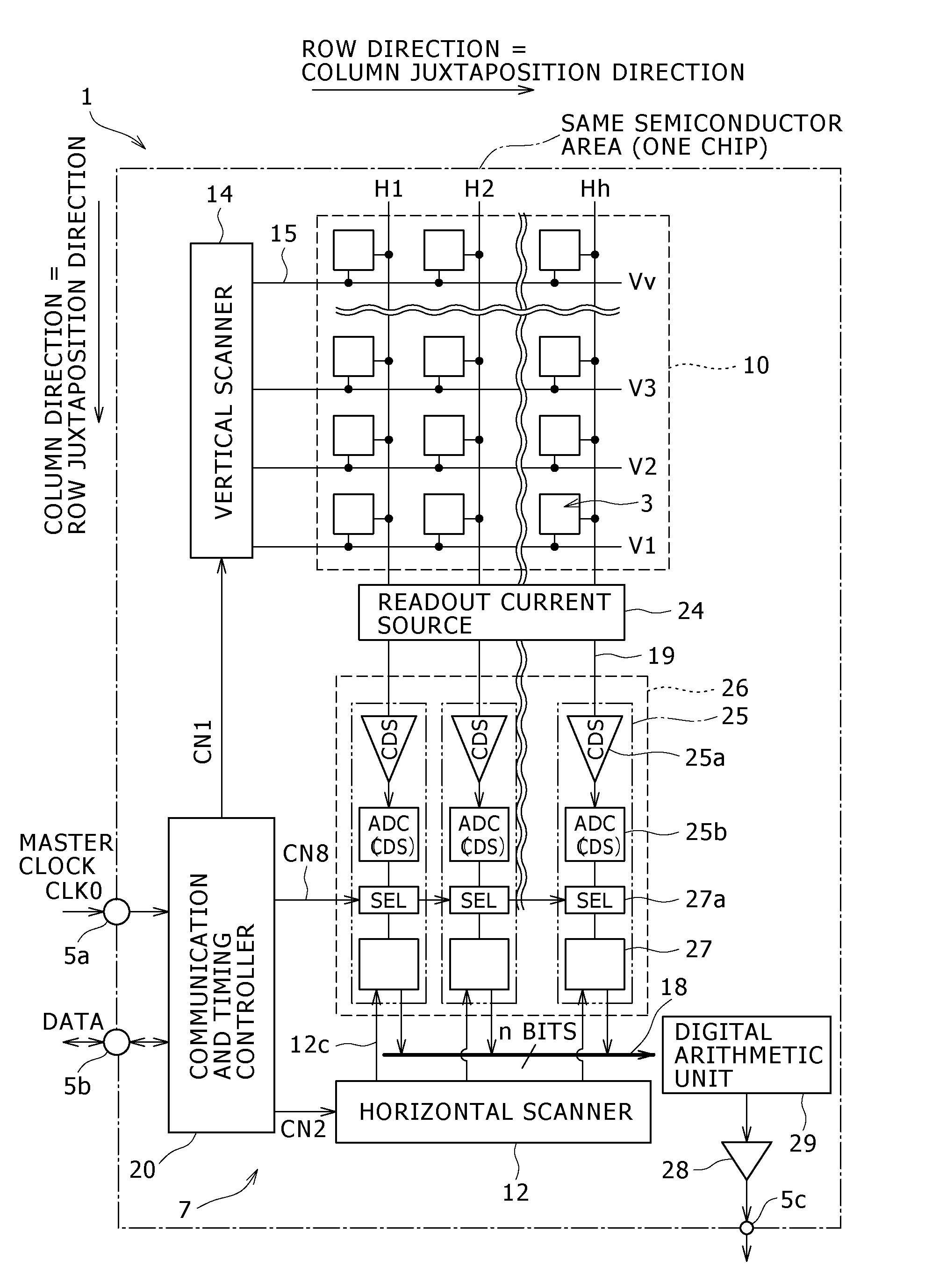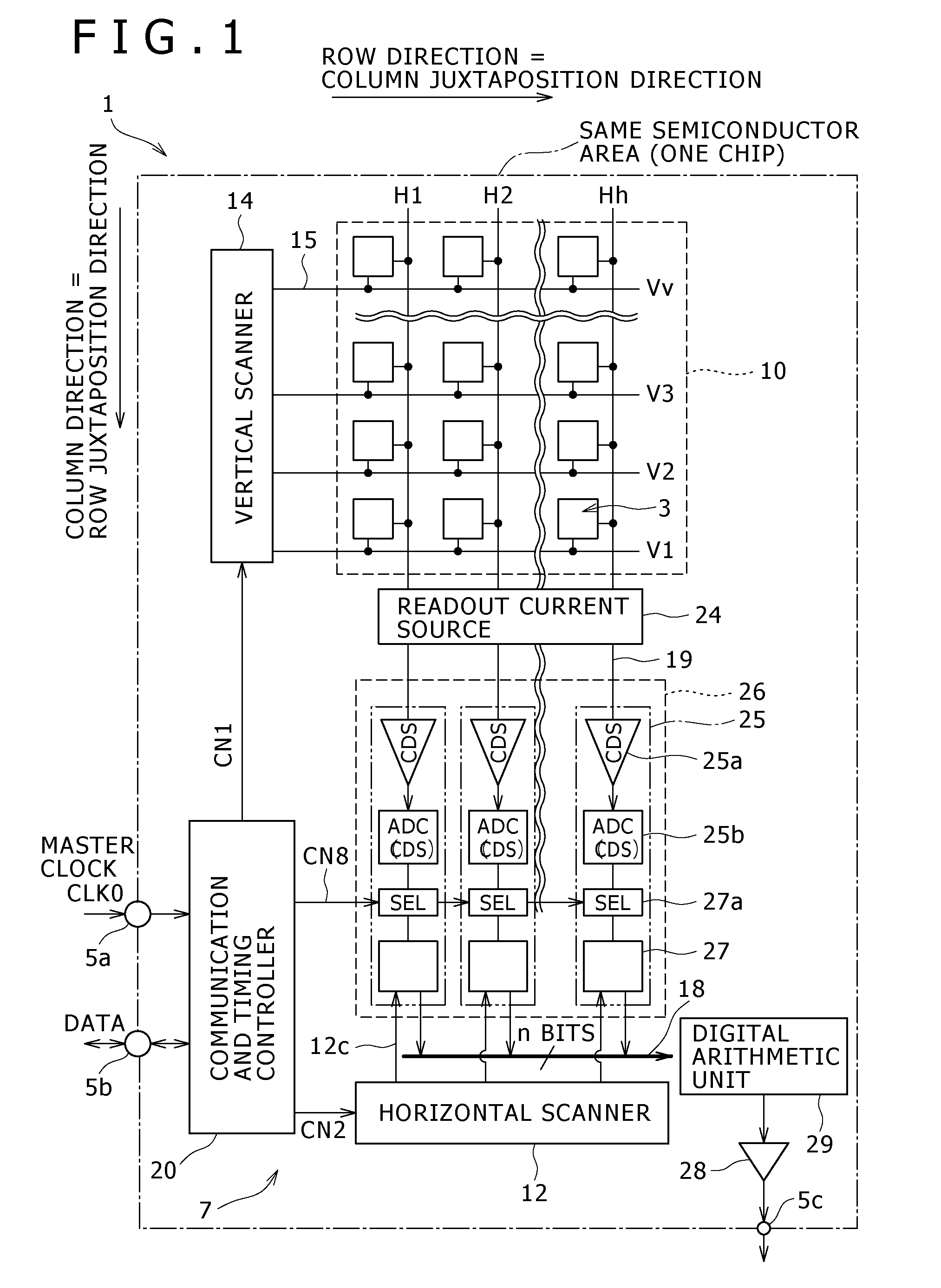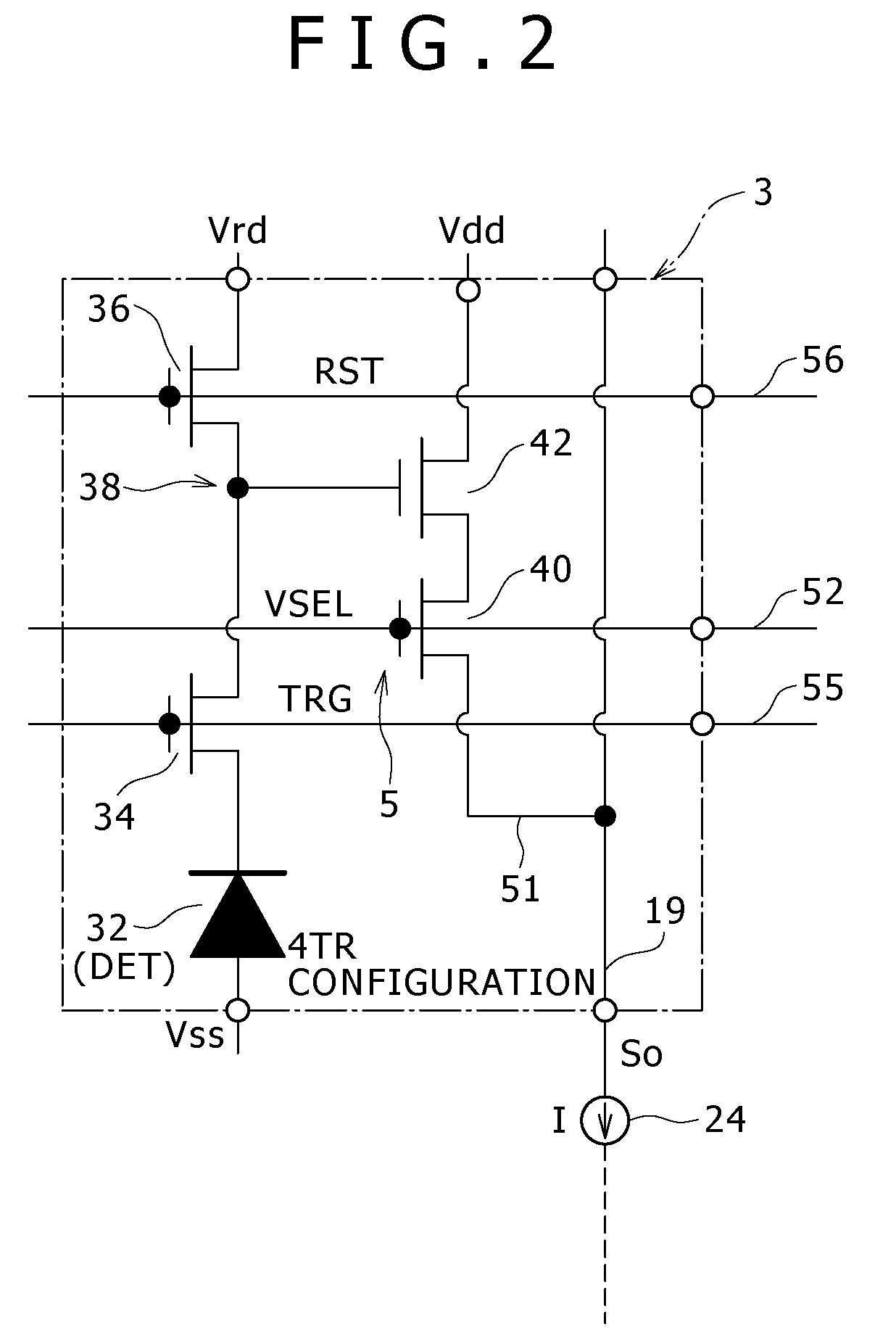Method for manufacturing solid-state imaging device
a solid-state imaging and manufacturing method technology, applied in the direction of color television, television systems, radio control devices, etc., can solve the problems of reducing the capability of readout by the transfer gate, limiting the forming of shallow, heavily doped p-type semiconductor regions by ion implantation, and difficult low-temperature processes, so as to achieve the effect of suppressing the dark current attributed to the interface sta
- Summary
- Abstract
- Description
- Claims
- Application Information
AI Technical Summary
Benefits of technology
Problems solved by technology
Method used
Image
Examples
Embodiment Construction
[0037]An embodiment of the present invention will be described in detail below with reference to the drawings. The following description will deal with an example in which a CMOS solid-state imaging device, which is one example of an X-Y address type solid-state imaging device, is used as the device relating to the embodiment. The description is based on an assumption that all of the pixels in the CMOS solid-state imaging device are formed of NMOS.
[0038]However, this assumption is merely one example and the device relating to the embodiment is not limited to a MOS solid-state imaging device. All of the embodiment to be described later can be similarly applied to all of semiconductor devices for detecting the distribution of a physical quantity, formed by arranging, in a line or a matrix, plural unit components having sensitivity to an electromagnetic wave such as light or radiation input from the external.
[0039]FIG. 1 is a schematic configuration diagram of a CMOS solid-state imagin...
PUM
 Login to View More
Login to View More Abstract
Description
Claims
Application Information
 Login to View More
Login to View More - R&D
- Intellectual Property
- Life Sciences
- Materials
- Tech Scout
- Unparalleled Data Quality
- Higher Quality Content
- 60% Fewer Hallucinations
Browse by: Latest US Patents, China's latest patents, Technical Efficacy Thesaurus, Application Domain, Technology Topic, Popular Technical Reports.
© 2025 PatSnap. All rights reserved.Legal|Privacy policy|Modern Slavery Act Transparency Statement|Sitemap|About US| Contact US: help@patsnap.com



